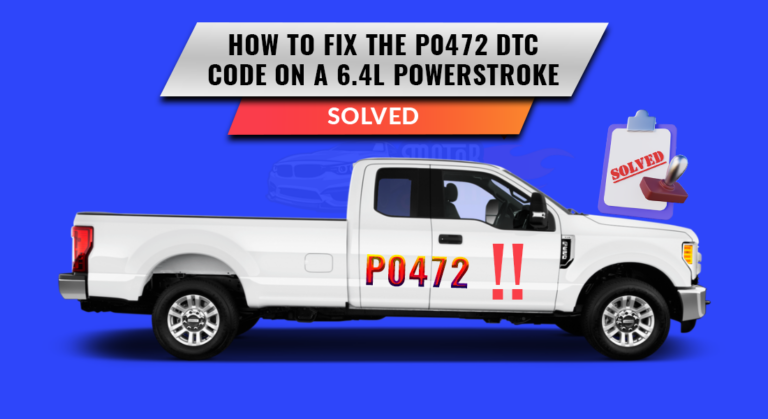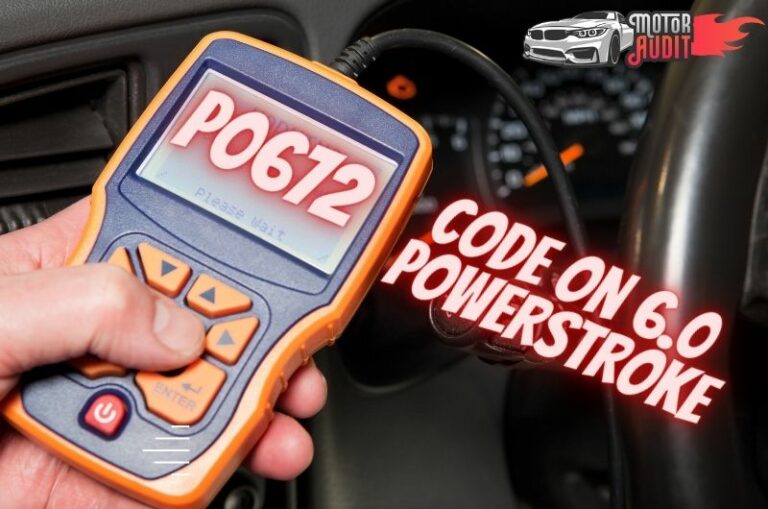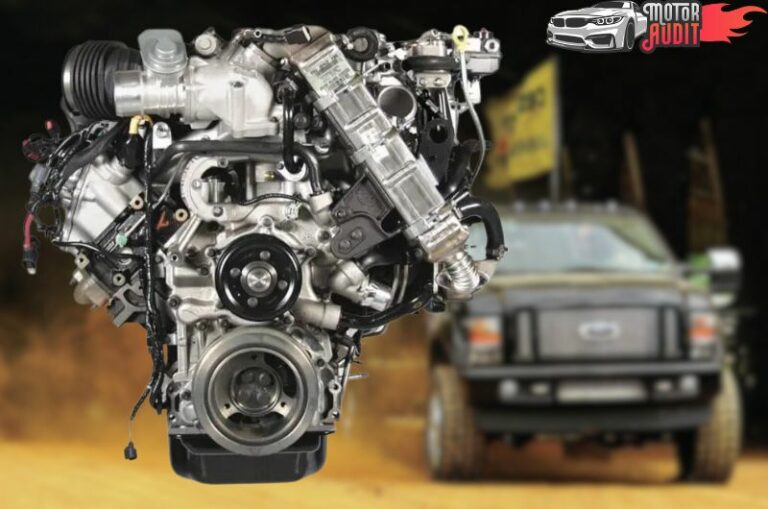6.0L Powerstroke Bad Exhaust Back Pressure Sensor Symptoms?
A Bad or Excess Exhaust back pressure can cause a significant drop in your 6.0 Powerstroke engine performance and fuel economy.
That’s why you need to be well aware of the symptoms to identify the bad or failing condition of the exhaust back pressure before it can cause more damage to your engine.
In today’s article, let’s learn how to detect when your 6.0 Powerstroke engine’s exhaust back pressure turns bad-
How to tell if your 6.0 powerstroke have a bad EBP sensor?The classic and most common sign that your 6.0 Powerstroke exhaust back pressure sensor has turned bad is when you notice a significant loss of power and fuel efficiency.
5 Symptoms To Detect A Bad EBP Sensor On 6.0 Powerstroke:
There are other significant symptoms by which you can easily identify when your exhaust back pressure sensor needs proper inspection and repairing or replacement.
So, read these to know also how to detect a bad exhaust back pressure sensor on 6.0 powerstroke engine.
1. Significant Loss Of Power & Fuel Efficiency
When the back pressure sensor of your exhaust system becomes faulty or damaged, it allows excessive back pressure.
As a result, you will notice a significant reduction in power and fuel efficiency of your 6.0 Powerstroke engine.
Especially if you see your engine is constantly losing power at high speed and the fuel economy turns low, make sure to inspect the exhaust back pressure level and sensor’s condition.
2. Decrease In Acceleration & Overheating Issue
Since excess exhaust back pressure or bad sensor significantly reduces your engine power and fuel economy or efficiency, it will also affect the engine’s performance on acceleration.
You will notice that your vehicle engine is visibly struggling and cannot accelerate as smoothly and quickly as usual.
Even you may see that the engine is getting heated quicker than usual because when the generated waste heat cannot escape, it overloads the cooling system and forces the engine to get more heated than normal.
3. Excessive Smoke Or Soot, Burning Smell & Noises
Another common symptom is when you notice an excessive amount of smoke or burning smell coming out of the exhaust system.
Even users have also noticed excess noises from the engine.
When the exhaust back pressure valve turns faulty, it affects the function of engine combustion and as a result excess amount of black smoke or soot comes out of the exhaust pipe.
4. Engine May Die
In case your exhaust gets entirely clogged because of excessive back pressure or a bad sensor, initially, the engine may start normally and idle fine.
But after few minutes, when the back pressure will form, it will strangle the engine, and as a result, your engine will forcefully shut down or die.
5. Pipe Connectors Or Converter Shell May Blow Out
Sometimes the exhaust back pressure can build up at such a degree that it may blow out any of the converter shells or pipe connectors.
Remember, it does not happen very commonly, and in some cases, users encounter this issue when their exhaust back pressure sensor turns faulty or bad.
But if you notice missing or blown pipe connectors or converter shells, make sure to check on the back pressure sensor.
It is one of the easiest ways to get a hint that something is wrong with your exhaust system, and you need to do a thorough inspection there.
These are the most common symptoms that will warn you about the excessive exhaust back pressure or faulty sensor of your 6.0 Powerstroke engine. So, make sure to keep them in mind and observe closely.
What to Do If You Detect A Bad EBP Sensor On 6.0 Powerstroke Engine?
Whenever you encounter or notice any symptoms indicating that your 6.0 Powerstroke exhaust has excessive back pressure or the sensor is damaged or faulty, follow the below instructions-
Do A Thorough Inspection:
As soon you notice any sign or symptom indicating that the exhaust sensor might not be working accurately and causing the problem, make sure the problem is not occurring because of other exhaust system issues.
First, do a thorough inspection to determine whether the problem arises because of any loose connection, clogged components, crushed or kinked exhaust pipe.
Also, make sure that the muffler you have installed there is accurate in type and size.
Quick Testing Techniques:
After finishing the inspection, if you find no other exhaust system faults to cause the problem rather than the exhaust back pressure sensor, perform some testing to confirm it precisely.
First, turn the key on and the engine off.
Then, check the exhaust back pressure reading whether the result is similar to the MAP and BARO sensors or different.
Sometimes, tapping on the sensor bracket causes the reading to change, which indicates that the sensor is faulty.
Sometimes, turning off the engine immediately after starting changes the sensor reading, so try that to verify if your sensor is damaged.
EBP Testing With Thermal Heat Gun:
In some cases, you cannot follow the typical testing method for exhaust back pressure because of the worsening condition of the internal blockage.
Instead, you can use a thermal heat gun to test the EBP.
While you are testing with the thermal heat gun make sure to check the before and after reading of your EBP to identify the difference.
Remember, this method of EBP testing is not always reliable, but in special circumstances, it might work.
Measuring The Back Pressure:
To confirm whether your back pressure level is high or low, you will need the back pressure gauge with the reading scale of either zero to 15 PSI, or zero to 100/higher kPa.
Start your vehicle, and if your engine has an air pump, tap at the air pump check valve.
Next, you need to disconnect the check valve to install the pressure. Connect the pressure gauge either to the exhaust manifold or fit in the exhaust system.
After that, connect the check valve in its position and make sure it is connected to the exhaust system ahead of the converter.
Note: If you are not experienced and familiar with this type of technical inspection, do not try it by yourself and contact your nearest dealer.
Verifying The Back Pressure Measurement:
First, rev and hold your vehicle engine at 2000 RPM, then check whether it remains steady or gradually increasing.
The standard reading at 2000 RPM for most engines should show 3PSI or less.
However, some engines reading might show a little higher than 3 PSI, which is also okay.
If the reading increases gradually or the reading shows significantly higher PSI, you need to contact your dealer or any professional mechanic to fix it.
6.0 Powerstroke Exhaust Back Pressure(EBP) Sensor Replacement Cost:
Typically exhaust pressure sensors are available at a reasonable and affordable price. So, the replacement will not cost much unless you also need other exhaust parts or component replacements along with that.
The EBP sensor prices may vary based on the model or version, but the pricing will be between$25.97 to a maximum of $80.
How Often Should You Inspect Or Service 6.0 Powerstroke EBP Sensor?
In general, all you need is to keep an eye on your vehicle engine’s performance and inspect further whenever you notice or encounter any obvious sign of a faulty EBP sensor.
Also, each Powerstroke engine model or version comes with a user manual where all information regarding every part and components schedule maintenance is given.
Therefore, make sure you are following that guideline religiously to prevent any troubleshooting issues.
Final Thoughts
When the 6.0 Powerstroke Exhaust back pressure (EBP) sensor turns faulty or the tube connected with the EBP sensor gets clogged, you will notice a visible drop in your engine’s performance.
Along with that, there are signs and symptoms to identify when your EBP sensor malfunction and causes the loss of power and fuel economy.
So, observe closely and take proper action when needed.
- Read Also>>4 Symptoms To Detect Low Fuel Pressure On 6.0 Powerstroke
- Read Also>>4 Symptoms To Detect A Bad IPR Valve On 6.0 Powerstroke
- Read Also>>What is P0541 Code On 7.3 Powerstroke & How To Fix?
- Read Also>>5 Symptoms To Detect CP4 Failure On 6.7 Powerstroke Engine
- Read Also>>5 Symptoms To Detect A Weak Fuel Pump On 6.0 Powerstroke





